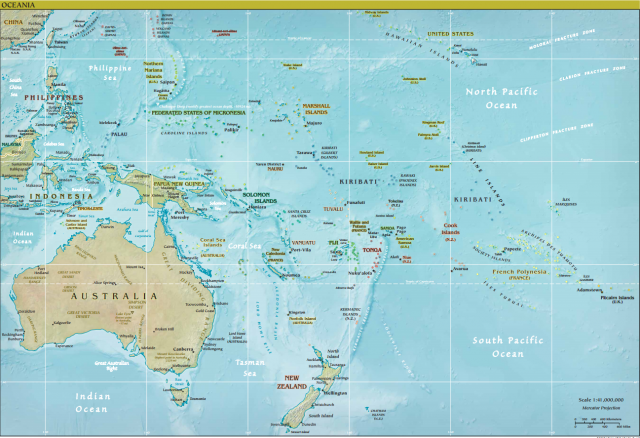 Print This Post
Print This Post- The Strategist - https://www.aspistrategist.org.au -
Australian ambition and aspiration for a South Pacific community
Posted By Graeme Dobell on January 29, 2018 @ 06:00

That the idea of a Pacific economic and political community which recognises and values the cultural diversity in the region, and the independent nations within it, and takes into account differing levels of growth and development, is worthy of further research, analysis and debate. Such a community should be based on the objectives of:
- sustainable economic growth for the region;
- a democratic and ethical governance;
- shared and balanced defence and security arrangements;
- common legal provisions and commitment to fight crime;
- priority health, welfare and educational goals;
- recognition of and action for improved environmental standards; and
- recognition of mutual responsibility and obligations between member countries of the community.
Over time, such a community would involve establishing a common currency, preferably based on the Australian dollar. It would also involve a common labour market and common budgetary and fiscal standards.
Australia is larger and has vastly more material resources than Pacific Island states: it represents 94.5 per cent of the region’s gross domestic product (GDP); 98 per cent of defence and security spending; 60 per cent of population; and contributes 60 per cent of all development assistance.
Article printed from The Strategist: https://www.aspistrategist.org.au
URL to article: https://www.aspistrategist.org.au/australian-ambition-aspiration-south-pacific-community/
[1] 2003 report A Pacific engaged: https://www.aph.gov.au/Parliamentary_Business/Committees/Senate/Foreign_Affairs_Defence_and_Trade/Completed_inquiries/2002-04/png/report/index
[2] Australasia: https://en.wikipedia.org/wiki/Australasia
[3] Oceania: https://en.wikipedia.org/wiki/Oceania
[4] foreign policy white paper: https://www.fpwhitepaper.gov.au/
[5] economic and security integration: https://www.aspistrategist.org.au/foreign-policy-white-paper-2017-integrating-the-south-pacific/
[6] integration is ‘vital’: https://www.aspistrategist.org.au/australias-agenda-for-integrating-the-south-pacific/
[7] Richard Marles: https://www.lowyinstitute.org/publications/richard-marles-australia-pacific
[8] argy-bargy about China’s aid to the South Pacific: https://www.aspistrategist.org.au/australia-frets-fights-south-pacific/
[9] plenty of downsides: http://devpolicy.org/the-upside-of-the-china-pacific-aid-controversy-20180119/
[10] destabilising impact of that chequebook diplomacy: https://www.lowyinstitute.org/publications/china-and-taiwan-south-pacific-diplomatic-chess-versus-pacific-political-rugby
[11] ‘crowded and complex’: https://www.aspi.org.au/report/crowded-and-complex-changing-geopolitics-south-pacific
[12] Pacific power? Australia’s strategy in the Pacific Islands: https://www.mup.com.au/books/9780522872248-pacific-power